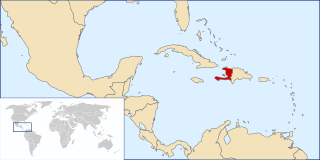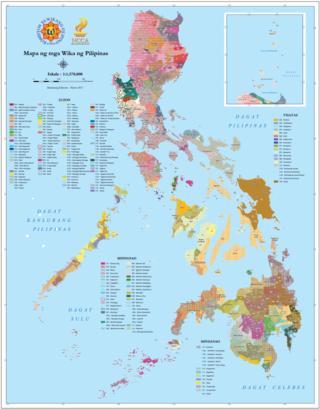Related Research Articles
In computing, a compiler is a computer program that translates computer code written in one programming language into another language. The name "compiler" is primarily used for programs that translate source code from a high-level programming language to a low-level programming language to create an executable program.

A computer program is a sequence or set of instructions in a programming language for a computer to execute. Computer programs are one component of software, which also includes documentation and other intangible components.
C is a general-purpose computer programming language. It was created in the 1970s by Dennis Ritchie, and remains very widely used and influential. By design, C's features cleanly reflect the capabilities of the targeted CPUs. It has found lasting use in operating systems, device drivers, protocol stacks, though decreasingly for application software. C is commonly used on computer architectures that range from the largest supercomputers to the smallest microcontrollers and embedded systems.
Ethnologue: Languages of the World is an annual reference publication in print and online that provides statistics and other information on the living languages of the world. It is the world's most comprehensive catalogue of languages. It was first issued in 1951, and is now published by SIL International, an American Christian non-profit organization.

Fortran is a general-purpose, compiled imperative programming language that is especially suited to numeric computation and scientific computing.

Python is a high-level, general-purpose programming language. Its design philosophy emphasizes code readability with the use of significant indentation.

Ruby is an interpreted, high-level, general-purpose programming language which supports multiple programming paradigms. It was designed with an emphasis on programming productivity and simplicity. In Ruby, everything is an object, including primitive data types. It was developed in the mid-1990s by Yukihiro "Matz" Matsumoto in Japan.
In computer science, syntactic sugar is syntax within a programming language that is designed to make things easier to read or to express. It makes the language "sweeter" for human use: things can be expressed more clearly, more concisely, or in an alternative style that some may prefer. Syntactic sugar is usually a shorthand for a common operation that could also be expressed in an alternate, more verbose, form: The programmer has a choice of whether to use the shorter form or the longer form, but will usually use the shorter form since it is shorter and easier to type and read.

In bilingual education, students are taught in two languages. It is distinct from learning a second language as a subject because both languages are used for instruction in different content areas like math, science, and history. The time spent in each language depends on the model. For example, some models focus on providing education in both languages throughout a student's entire education while others gradually transition to education in only one language. The ultimate goal of bilingual education is fluency and literacy in both languages through a variety of strategies such as translanguaging and recasting.
In mathematics and computer programming, the order of operations is a collection of rules that reflect conventions about which procedures to perform first in order to evaluate a given mathematical expression.
Electronic design automation (EDA), also referred to as electronic computer-aided design (ECAD), is a category of software tools for designing electronic systems such as integrated circuits and printed circuit boards. The tools work together in a design flow that chip designers use to design and analyze entire semiconductor chips. Since a modern semiconductor chip can have billions of components, EDA tools are essential for their design; this article in particular describes EDA specifically with respect to integrated circuits (ICs).
In computer programming, an assignment statement sets and/or re-sets the value stored in the storage location(s) denoted by a variable name; in other words, it copies a value into the variable. In most imperative programming languages, the assignment statement is a fundamental construct.
In compiler design, static single assignment form is a property of an intermediate representation (IR) that requires each variable to be assigned exactly once and defined before it is used. Existing variables in the original IR are split into versions, new variables typically indicated by the original name with a subscript in textbooks, so that every definition gets its own version. In SSA form, use-def chains are explicit and each contains a single element.

Haitian Creole, commonly referred to as simply Creole, or Kreyòl in the Creole language, is a French-based creole language spoken by 10–12 million people worldwide, and is one of the two official languages of Haiti, where it is the native language of a majority of the population.

There are some 120 to 187 languages spoken in the Philippines, depending on the method of classification. Almost all are Malayo-Polynesian languages native to the archipelago. A number of Spanish-influenced creole varieties generally called Chavacano along with some local varieties of Chinese are also spoken in certain communities. The 1987 constitution designates Filipino, a standardized version of Tagalog, as the national language and an official language along with English. Filipino is regulated by Komisyon sa Wikang Filipino and serves as a lingua franca used by Filipinos of various ethnolinguistic backgrounds.

Pitjantjatjara is a dialect of the Western Desert language traditionally spoken by the Pitjantjatjara people of Central Australia. It is mutually intelligible with other varieties of the Western Desert language, and is particularly closely related to the Yankunytjatjara dialect. The names for the two groups are based on their respective words for 'come/go.'
In digital lexicography, natural language processing, and digital humanities, a lexical resource is a language resource consisting of data regarding the lexemes of the lexicon of one or more languages e.g., in the form of a database.
Wapishana (Wapixana) is an Arawakan language of Guyana and Brazil. It is spoken by over 6,000 people on both sides of the Guyana-Brazil border.
mimalloc is a free and open-source compact general-purpose memory allocator developed by Microsoft with focus on performance characteristics. The library is about 11000 lines of code and works as a drop-in replacement for malloc of the C standard library and requires no additional code changes. mimalloc was initially developed for the run-time systems of the Lean and Koka languages. Notable design aspects include free list sharding, eager page reset, first-class heaps. It can co-exist with other memory allocators linked to the same program. mimalloc is available on Windows, Mac OS X, Linux and *BSD. The source code is licensed under MIT License and available on GitHub.
In computer science, choreographic programming is a programming paradigm where programs are compositions of interactions among multiple concurrent participants.
References
- ↑ Grelck, Clemens (2019), Zsók, Viktória; Porkoláb, Zoltán; Horváth, Zoltán (eds.), "Single Assignment C (SAC)", Central European Functional Programming School: 6th Summer School, CEFP 2015, Budapest, Hungary, July 6–10, 2015, Revised Selected Papers, Cham: Springer International Publishing, pp. 207–282, doi:10.1007/978-3-030-28346-9_7, ISBN 978-3-030-28346-9 , retrieved 2023-03-15